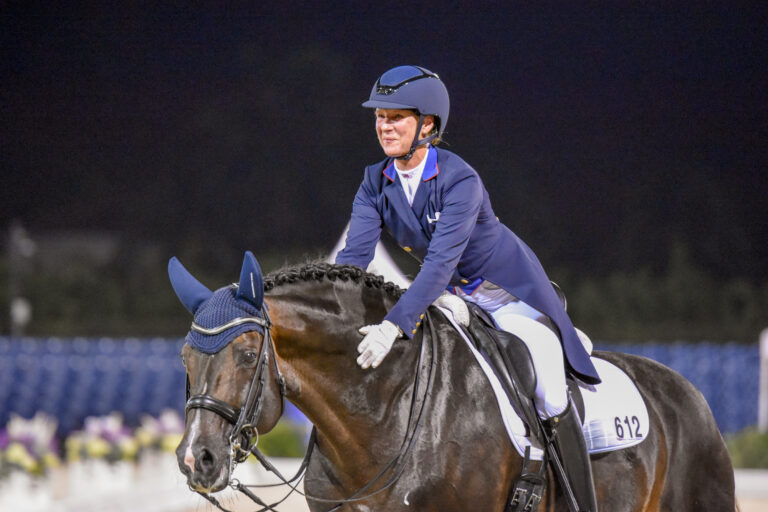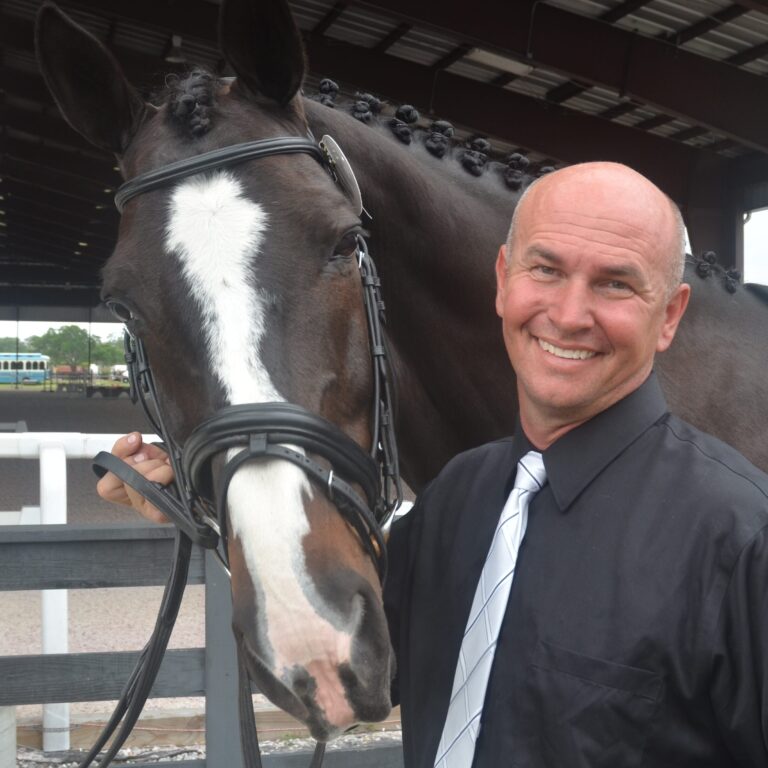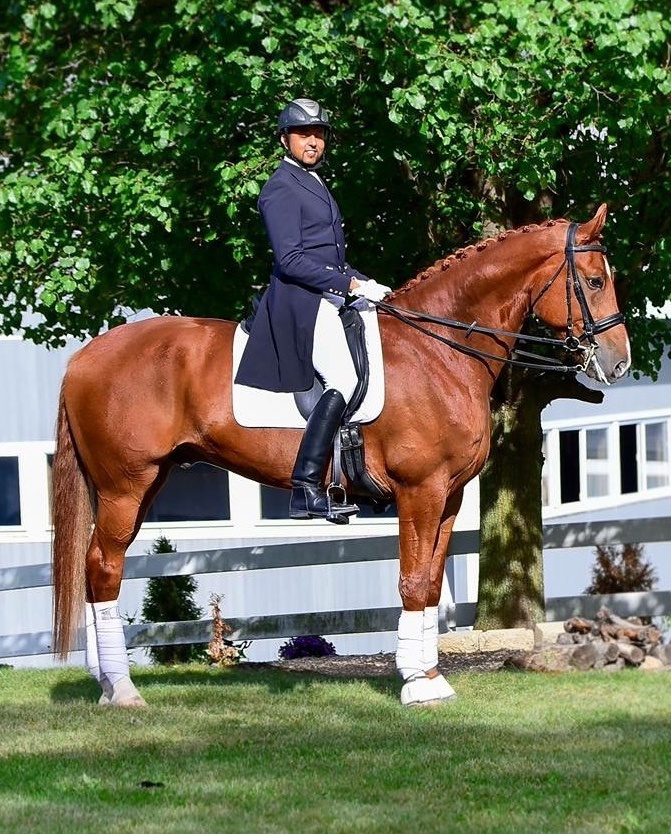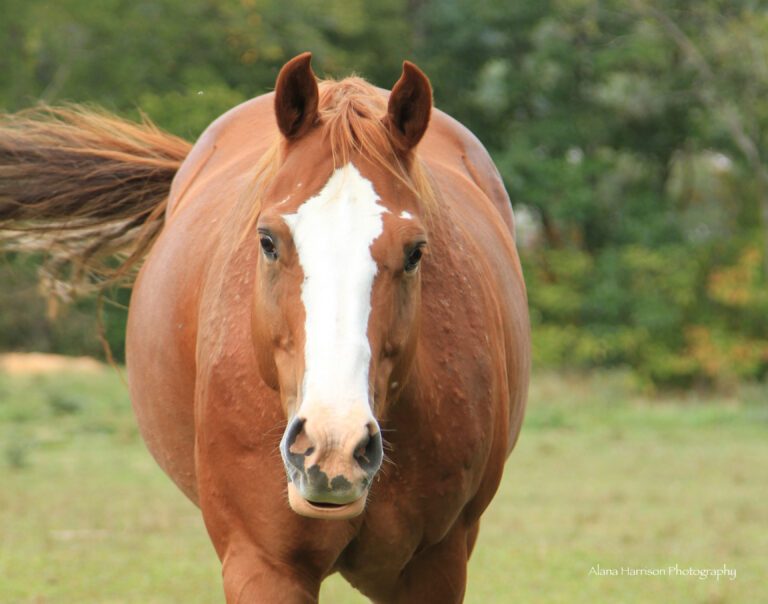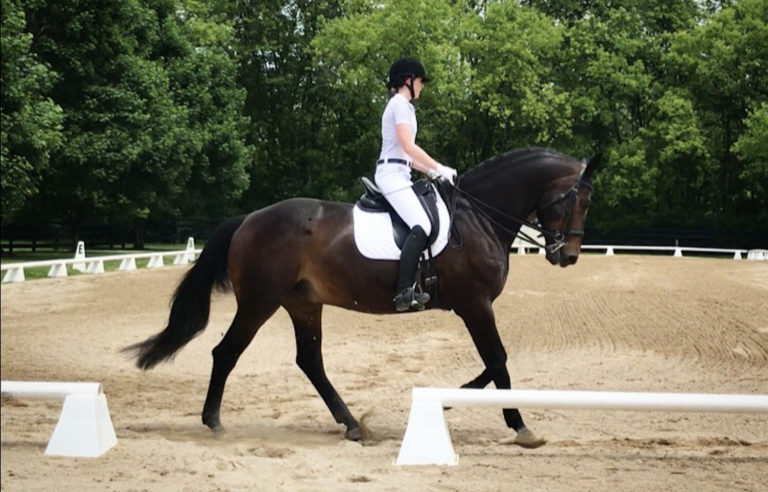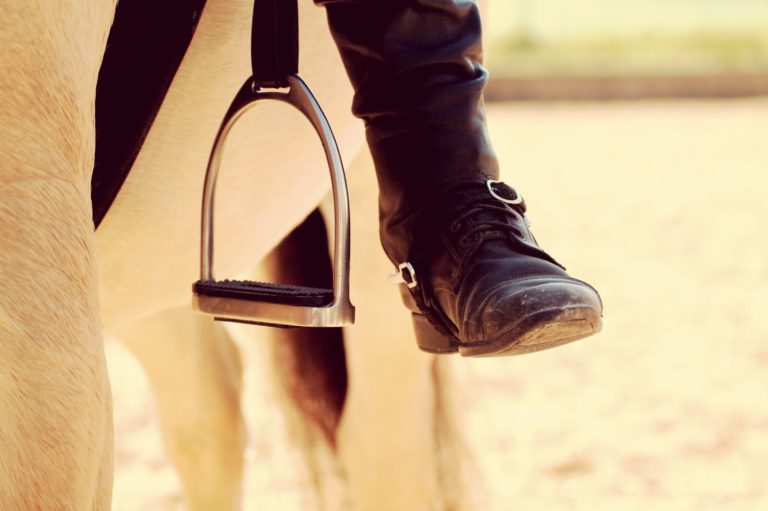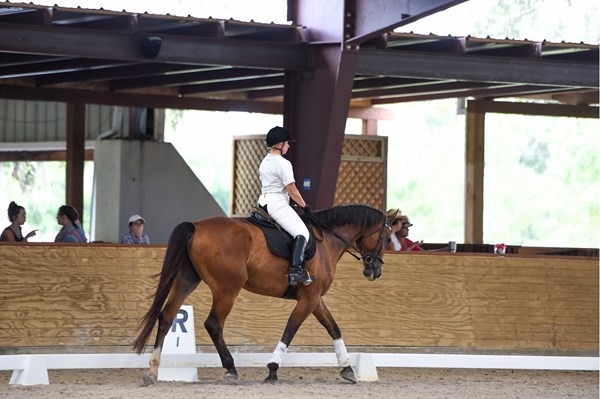Depending on your point of view, the bit is either a tool to be used to communicate and achieve ultimate harmony with your horse or a device that inflicts discomfort on highly sensitive tissues. There’s the camp for whom any mouthpiece is painful: “Bits cause extreme and unnecessary pressure against a horse’s mouth,” observes a commenter in an online equestrian forum. “What are the bitted riders afraid of?” another asks. “Maybe they feel that they won’t be able to control their horses without a piece of metal.”
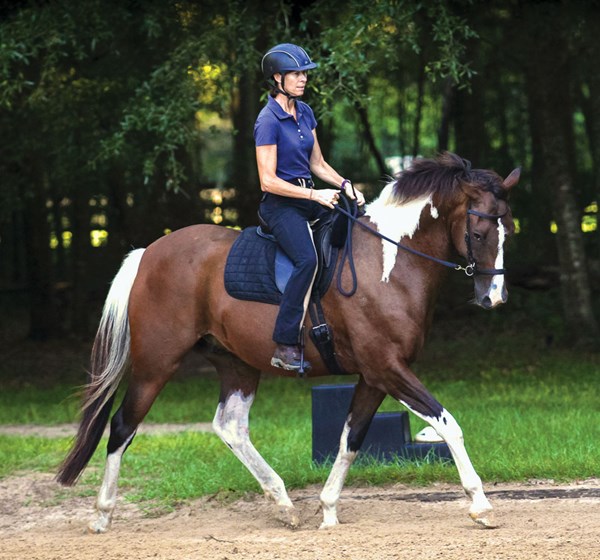
As an Amazon Associate, Dressage Today may earn an affiliate commission when you buy through links on our site. Products links are selected by Dressage Today editors.
Then there are others who insist that dressage isn’t dressage without a bit. Still others contend that dressage is less about what’s in a horse’s mouth than about the hands holding the reins, as one Internet post illustrates: “[Dressage is] about connection from back to front. If you are good enough, you should be able to produce that without a piece of metal in your horse’s mouth.”
Karen Rohlf has heard it all. The Florida-based rider and trainer has an impressive resume: She came up through the ranks of Pony Club and then trained for more than two decades with 5* dressage judge and former U.S. dressage chef d’equipe Anne Gribbons. Yet Rohlf’s willingness to work her horses without a bit has earned her a reputation as an outlier. “People don’t always know what to make of me because sometimes I ride with a bit and sometimes I don’t. But I’m always doing dressage.”
Though her educational system, “Dressage, Naturally” includes natural horsemanship principles, Rohlf isn’t a flag-bearer for bitless bridles. “I’m for what works for the particular horse and helps you achieve your goal, with the goal being to fulfill the object of dressage as written by the FEI.” Rohlf says that she wishes bitless dressage wasn’t viewed as something different than regular dressage. “We wouldn’t say, ‘I’m doing snaffle dressage’ or ‘I’m doing double-bridle dressage.’ It’s just dressage,” she says.
Why Bitless?
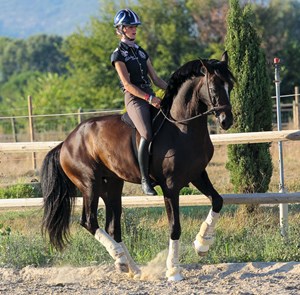
Whether or not dressage is still dressage without something in the horse’s mouth is a matter of perspective. Bitless proponents assert that “on the bit” is a mistranslation of the original French expression for “on the aids” or “in the hands,” and that the dependence on the bit is misguided. But the rules—as set by the FEI and the USEF—are unequivocal about what’s at the end of the reins in recognized dressage competition. The USEF Rule Book states that the main contact with the horse’s mouth must be through the snaffle bit. Likewise, the double bridle (with both curb and snaffle bits) is mandatory for FEI-recognized shows. However, not all countries have the same rules about riding with a bit in recognized competition. After a three-year pilot program, the Royal Dutch Equestrian Federation announced last year that horses may be ridden without bits at the lower levels in recognized shows in the Netherlands.
For Rohlf and others, there are horses for whom the bit makes dressage a challenge. Rohlf’s PRE/Mustang/Oldenburg mare, Solana, is a case in point. “She is lovely and round except when I put a bit in,” Rohlf explains. “With a bit, she’s balky, behind the leg, curled up and crooked.” Then there’s her Paint/Holsteiner gelding, Ovation. “He’d go from a lovely contact when he was ridden bitless, to avoiding the feel in the snaffle. His neck was contracted and he was more difficult to engage. I found a curb he likes, so his double bridle is a bitless plus a curb.”
Rohlf believes bitless bridles are as safe as any other piece of equipment. “The bit isn’t what keeps us safe. Our training is what keeps us safe. I’ve seen plenty of horses in bits being unsafe and plenty of horses being safe without one.”
Suzy Maloney of New South Wales, Australia, started a business called Happy Horses Bitless, which promotes the use and acceptance of bitless bridles. She did this after finding success using cross-under bitless bridles, a design in which the reins connect to straps that cross beneath the horse’s jaw and slide through rings connected to the noseband, distributing pressure over the bridge of the nose. “The most common feedback I get from people who transition to bitless is, ‘My horse is now so relaxed and calm.’ It’s one of those lightbulb moments when they realize that the way we’ve all been taught to ride in bits may actually be what’s stopping us from controlling them.”
In Edmonton, Canada, FEI rider Allegra Hohm prefers a bit for her own training, but she’s seen the turnaround a horse can make going bitless. “Most horses do great in a snaffle, but the day my student’s Quarter Horse went bitless, he was like a different horse—he was far more comfortable and willing to work.”
Anne Gribbons isn’t convinced that a dressage rider can achieve correct contact in a bitless bridle. Although she’s ridden her horses in hackamores on occasion, she says, “I missed the feeling that somebody was home at the other end of the reins. If I had to pick one key ingredient in dressage riding and training, the connection that the horse gives you—or does not—is the most critical. If the relationship between your hand and seat and the horse’s mouth is disturbed, you cannot access his hindquarters. There is no ‘transmission.’”
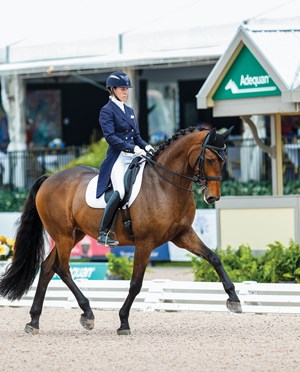
Without a bit, she adds, the half halt is essentially useless as a tool to contain and direct the horse’s energy. “There’s nothing like the feeling of a horse with a great mouth responding to the slightest closing of the hand and a whisper with the leg by immediately engaging his hind leg and coming up under your seat in a power surge that carries you both forward. The thrill of real throughness is hard to imagine without a bit because there’s nothing live on the other end,” she says.
“Having said that, I realize that I am of the old school and comfortable with methods I am familiar with. That does not mean that I do not respect the opinions of the bitless-bridle proponents or that I would never try riding in one. Dressage only means ‘training,’ and a good trainer keeps an open mind,” Gribbons adds.
Rohlf doesn’t disagree with Gribbons’ statement that the bit can be a powerful piece of equipment. “Riding in an excellent connection with the bit is pretty darned amazing. But if you’re riding a horse who just doesn’t like bits, removing the bit can be what allows the best connection into the reins. The bit does not create connection, it receives it.
Dressage rider Alizée Froment of France has performed bitless Grand Prix demonstrations to wide acclaim. She first tried a bitless bridle on a lark and now trains her Lusitano stallions, Mistral du Coussoul, Naxos du Coussoul and Sultan du Coussoul, without bits. She’s even designed her own bitless bridle. “I use it on Mistral before the big competitions because he is always more relaxed, with a bigger canter without a bit,” Froment explains. “My horses are ridden in the double bridle only during competitions and sometimes during clinics.”
A Kinder Bridle?
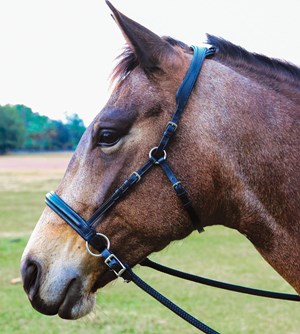
Whether bits cause pain is a topic where the debate between bitless advocates and critics gets contentious. The developer of a popular cross-under bitless bridle, W. Robert Cook, FRCVS, PhD, argues that bits place enormous pressure per square inch on highly sensitive tissue and, in turn, prevent the horse from breathing normally during exercise. Bits, he and others caution, can be used to flex the horse at the poll and pull him into false self-carriage.
Hilary M. Clayton, BVMS, PhD, Diplomate ACVSMR, MRCVS, professor and McPhail dressage chair emerita, has utilized fluoroscopic studies to explore how bits function and concluded that bitting is dependent on individual mouth size and shape, palate shape and tongue size. Bits that are improperly adjusted, fitted or used can cause pain or injury to bony surfaces. When a horse accepts a correctly fitted bit, the tongue muscles relax.
“Soft tissues like the tongue can conform somewhat to the shape of the bit, whereas the hard tissue—the hard palate, the bars or the front of the nose—cannot,” she says.
Before assuming bitless bridles are gentler, Clayton suggests riders first examine the mechanics behind their designs. In a bitless model, she says, “pressure is applied in a different place—the contact point on the nose and possibly other parts of the head—but is not necessarily kinder. The cross-under bitless bridle puts pressure under the jaw and on top of the poll, and some bitless bridles use leverage, so the pressure is actually magnified.”
When Hohm tried riding her Swedish Warmblood, Rowan, without a bit, he couldn’t tolerate the pressure on his head. “With a bitless [bridle], you have to be really soft. In my opinion, a bitless [bridle] is not any less harsh than a snaffle. They have as much potential for abuse as any bitted bridle.”
Jan Ladewig, professor emeritus of domestic animal behavior at the University of Denmark and an honorary fellow of the International Society for Equitation Science (ISES), isn’t sure if a bitless bridle used incorrectly could do as much physical damage as one with a bit. “I doubt we would see as many blue tongue scandals if the hyperflexion riders used bitless bridles,” he says. “A horse with a heavy-handed rider on his back would probably be better off without a bit in his mouth. On the other hand, a horse with a bitless bridle in the hands of such a rider would not necessarily be better off psychologically. The truest thing you can say about equipment used for horse riding is that it’s not so much what kind of equipment you use. What is much more important is how you use it. And that is true of bitted and bitless bridles.”
A Change on the Horizon?
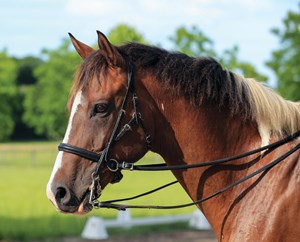
The tide may be turning for bitless bridles. In addition to the Royal Dutch Equestrian Federation’s recent change to allow bitless dressage in lower-level competition, there are also bitless dressage competitions and schooling shows popping up from Michigan to South Africa.
Developments such as these can’t come fast enough for advocates, who are petitioning their national federations to allow bitless bridles in the show ring. Others are rejecting traditional shows in favor of submitting a video for online dressage judging. Maloney is in the process of gathering signatures to present to Equestrian Australia, asking that dressage riders be able to choose to ride with or without a bit. “Our competition rules state that bitless bridles can be used in show jumping and eventing,” she explains. “Obviously, our federation feels bitless bridles are safe; otherwise, they wouldn’t allow them in the two most dangerous horse sports.”
Gribbons, who advocated for allowing the snaffle to be used through the FEI levels at national shows, says that allowing bitless bridles in CDIs was discussed when she served on the FEI Dressage Committee.
“What we arrived at was that introducing bitless dressage would change the nature of the sport beyond what is possible to integrate. Thousands of years have been devoted to explore and refine our relationship with the mouth of the horse, and although I agree that having a piece of steel—or two—in your mouth whenever you work may be unpleasant, I have also experienced many horses that enjoy the intimate relationship between the hand and the mouth and actually look for it. When a horse is properly on the bit, there is a very delicate feel of harmony and communication between the rider and the horse that I highly doubt can be achieved without it.”
For now, bits in recognized dressage competitions in the U.S. are here to stay. Rohlf hopes the discussion will prompt riders to stop and think about the tools they use.
“We need to ask if the contact with the horse’s mouth is more or less important than the biomechanics. If bit contact is the most important part of dressage, then we need to ask why we allow tightened nosebands.”
Hohm believes there’s room for bitless bridles in dressage: “Regardless of the tack you put on, it still goes back to who’s holding the reins.”



